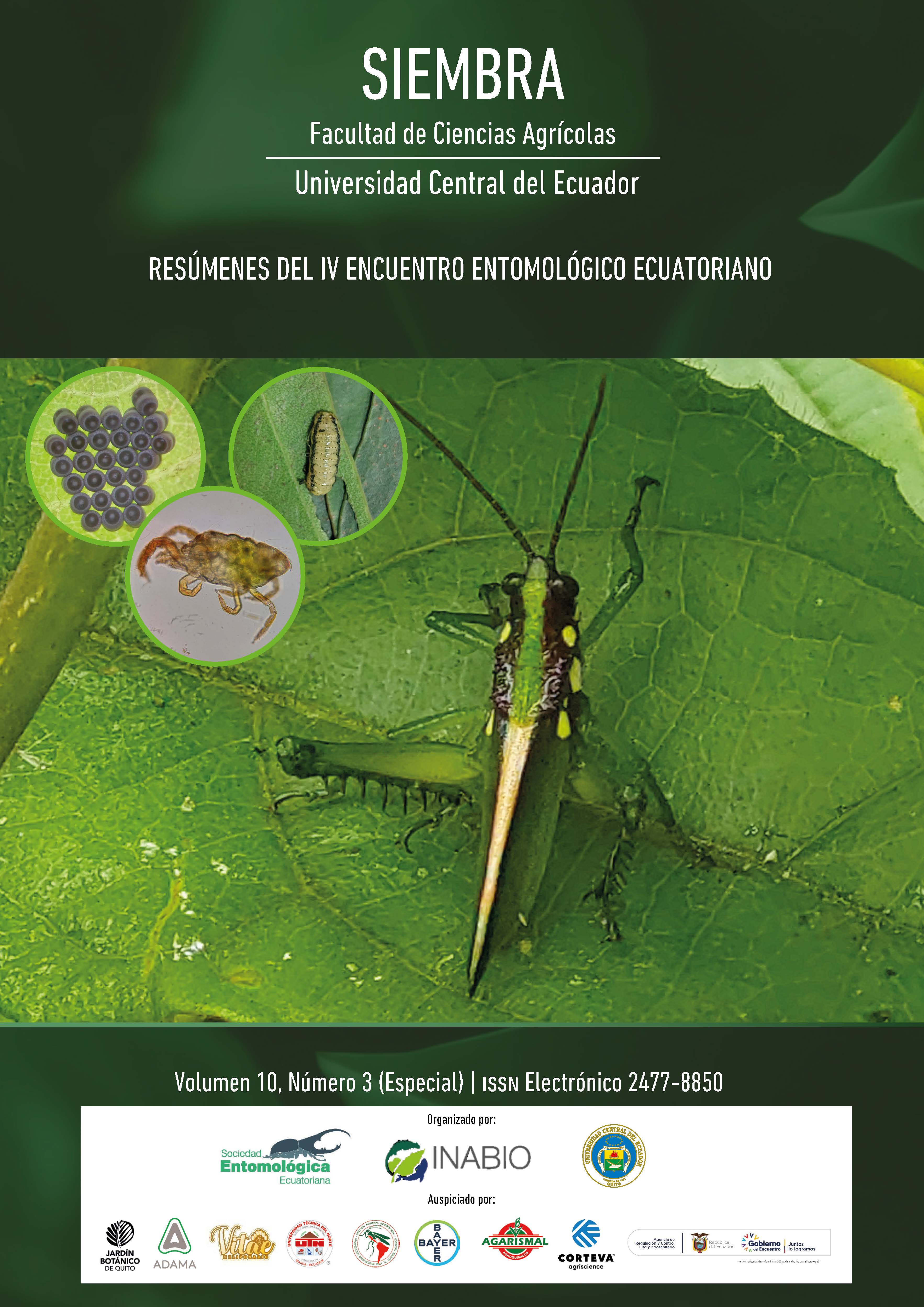ED007. Following in the footsteps of introduced ladybugs in Ecuador
Main Article Content
Abstract
Non-native species may cause significant negative impacts on the biological communities into which they have been introduced. These impacts can be ecological, by impacting native species, and socioeconomic, by affecting human populations, natural resources, and environmental services. Ladybugs are one of the most prominent cases of non-native species that have been successful in their new environments and have come to generate positive and negative ecological and socioeconomic impacts. These beetles are characterized by their diet of aphids and other insects that can be agricultural pests, so they are beneficial as biocontrollers; However, there are some species, such as the famous Harlequin Ladybird Harmonia axyridis, that can generate negative impacts on native insect communities and on agricultural production and human health. In Ecuador we know of the presence of at least six species of non-native ladybirds belonging to the Coccinellini tribe: Hippodamia convergens, Mulsantina mexicana, Harmonia axyridis, Cheilomenes sexmaculata, Coccinella septempunctata and Coelophora inaequalis. Unfortunately, very little is known about the ecological and socioeconomic impacts that these species are exerting and, in fact, discovering the process of arrival and settlement of their populations has been a challenge for researchers. In this study we will briefly review the possible routes of entry into the country and a review of its distribution in continental Ecuador.
Downloads
Metrics
Article Details

This work is licensed under a Creative Commons Attribution-NonCommercial 4.0 International License.
The authors who publish in Siembra know and accept the following conditions:
- Authors retain the copyright and grant Siembra the right of first publication of the work, under the Creative Commons Attribution License. Third parties are allowed to use what has been published as long as they refer to the author or authors of the work and its publication in this journal.
![]() This content is licensed under a Creative Commons Attribution-Noncommercial 4.0 International (CC BY-NC 4.0).
This content is licensed under a Creative Commons Attribution-Noncommercial 4.0 International (CC BY-NC 4.0).
- Authors maintain the copyright and guarantee Siembra the right to publish the manuscript through the channels it considers appropriate.
- Authors may establish on their own additional agreements for the non-exclusive distribution of the version of the work published in Siembra, acknowledging their initial publication in the same, such as in institutional repositories.
- Authors are authorized to disseminate their work electronically once the manuscript is accepted for publication.

